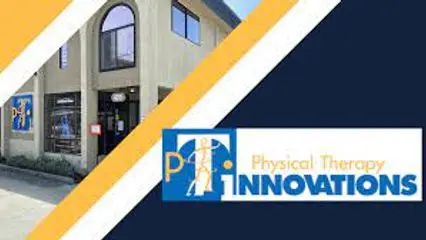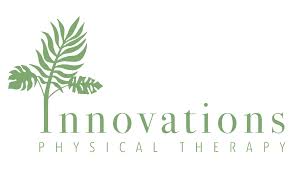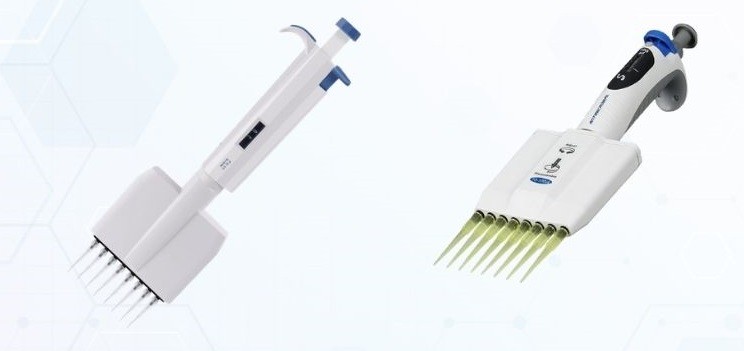Innovation in Physical Therapy Future & Trends

In recent decades, there have been significant advancements like physical therapy innovations in the field of physical therapy, leading to improved quality and effectiveness of the practice and helping patients achieve their goals more efficiently. One notable innovation that has gained prominence, especially during the COVID-19 pandemic, is telehealth technology, which has revolutionized healthcare, including physical therapy.
The technology employed in the field of physical therapy has consistently brought about positive changes, improving the quality of patient treatment and aiding professionals in streamlining administrative processes to meet compliance requirements more effectively. With significant advancements occurring every year, physical therapy professionals can now diagnose and treat patients with greater precision, ultimately reducing individual downtime.
The use of telehealth technology has skyrocketed, allowing physical therapists to continue providing care remotely. This technology has played a crucial role in ensuring uninterrupted treatment and support for patients.
Various technologies have contributed to the field of physical therapy. One such example is physical therapy electronic medical record (EMR) software, which simplifies practice management and streamlines operations. This technology serves as an all-in-one solution, enabling physical therapists to document their work efficiently and adhere to compliance standards when transitioning to a paperless system.
Physical Therapy Innovations Reviews

Technological advancements in the field of physical therapy have significantly improved the accuracy of patient treatment, leading to enhanced patient experiences and improved functional outcomes. Technology plays a dual role in supporting both administrative tasks and clinical aspects of physical therapy.
The industry has consistently embraced innovation to drive positive changes. Whether it involves streamlining processes or enhancing treatment methodologies, technology has proven to be effective in meeting these goals. Physical therapy software, for example, reduces individual downtime and enables physical therapists to diagnose patients more effectively and efficiently.
The Importance of Physical Therapy Innovations
Over time, medical innovations have played a vital role in improving patients’ quality of life by reducing the severity and impact of injuries and illnesses. Within the field of physical therapy, continuous advancements have emerged to facilitate better recovery and faster restoration of mobility following injuries, accidents, or significant health events.
The physical therapy space is witnessing a constant influx of new technologies and methodologies each year, indicating that innovation in this field is far from reaching a plateau. Let’s delve deeper into the current and upcoming physical therapy innovations that are shaping the future of the profession.
History of Early Innovative Advancements in Physical Therapy
In the past few decades, the field of physical therapy has experienced significant advancements and innovations. These innovations have had a positive impact on the quality and efficacy of physical therapy practice, ultimately benefiting patients by allowing them to achieve their treatment goals faster and more comfortably.
Some of the earlier physical therapy innovations and advancements include:
1. Neuromuscular Electrical Stimulation (NMES):
Neuromuscular Electrical Stimulation (NMES), which was first documented in medical literature around 1964, is a therapeutic technique that aids patients in recovering range of motion and strength after injury or surgery. This method involves the use of electrical impulses to specifically target and stimulate particular muscle groups.
2. Low-Level Laser Therapy (LLLT):
Lower-Level Laser Therapy (LLLT) has been utilized since 1967 to provide pain relief for patients suffering from various musculoskeletal conditions like osteoarthritis, temporomandibular joint disorder (TMD), and disc herniation. This therapy employs low-level laser light to expedite tissue regeneration and decrease inflammation, offering relief to individuals experiencing these conditions.
3. Telemedicine/Tele-Rehab:
Telerehabilitation has been available since 1998 as a means for patients to access personalized physical therapy services using internet-connected devices and webcam support. This innovative approach allows individuals to receive virtual therapy sessions remotely, providing convenience and accessibility for patients seeking physical therapy services.
Although all three initial physical therapy innovations mentioned are still widely used in practice today, the utilization of telemedicine, in particular, has experienced a significant surge in recent years, primarily driven by the COVID-19 pandemic.
5 Exciting Present-Day Innovations in Physical Therapy

In the last few years, from 2022 and beyond into 2023, it will be crucial for physical therapy professionals to stay updated with the latest industry trends to enhance and progress their services. Some of the current innovations in the field include the use of physical therapy apps, rehabilitation robotics, and gamified physical therapy. These advancements have the potential to revolutionize the way physical therapy is delivered and can greatly benefit both practitioners and patients.
1. Physical Therapy Apps
In the current age of mobile technology, the popularity of physical therapy apps has grown significantly, serving the needs of both patients and providers. Patients can benefit from apps like Pocket Anatomy and the Orca Health App, which offer a deeper understanding of their injury or condition’s anatomy and the corresponding treatment procedures. These apps also provide an effective platform for physical therapy professionals to engage patients and involve them in their care plans.
2. Virtual Reality Technology
Advancements in physical therapy have facilitated the integration of consumer-based virtual reality (VR) technology into patient treatment services. VR technology can create simulated environments that mimic activities like walking or engaging in sports, allowing physical therapy professionals to assess a patient’s mobility and track the progression of their condition. Moreover, VR provides a safe and controlled setting for patients to practice and regain their mobility skills and strength.
3. Wearable Technology
On a smaller scale, wearable technologies like FitBits or Apple smartwatches motivate patients to stay physically active. However, on a larger scale, wearable physical therapy technologies like instrumented shoe insoles and full-body exoskeletons have significantly aided physical therapists in achieving their treatment objectives by providing comprehensive data and advanced support.
4. Gamified Rehabilitation
Physical therapy innovations have introduced gaming technology into the rehabilitative process, offering a practical and enjoyable approach to achieving patient treatment goals across various age groups, from adolescents to seniors. Prominent examples include Wii-Hab, which utilizes a controller and balance board to engage patients in games like Wii Sports and Zumba Fitness. These games not only motivate patients to be active but also enable them to work on their range of motion and track their overall progress while having fun.
5. EMR and Practice Management Software
Physical therapy innovations and advancements in patient treatment technology have made a significant impact on EMR (Electronic Medical Record) and practice management software. These modern software solutions enable physical therapists to efficiently manage their practice population and streamline referral processes, ultimately aiding in attracting new patients. Additionally, EMR and practice management software facilitate the identification and tracking of key performance indicators (KPIs), enabling PTs to conduct better financial analysis and manage their practice more effectively.
Innovation in Physical Therapy Future & Trends
Despite the perception that innovation in physical therapy has reached its pinnacle, it is crucial to recognize that further advancements are on the horizon and show no signs of slowing down. As new techniques and tools emerge, they are poised to become essential elements in the practice of physical therapy. Professionals need to stay informed about current trends in the field.
Here are some of the cutting-edge physical therapy innovations that professionals should pay attention to in the future:
- Advancements in telemedicine: customized treatment videos replace one-to-one interventions.
- Sports medicine and physical therapy: improved concussion treatment and prevention techniques based on recent data.
- Wearable robotics: enhancements in range of motion, muscle support, fall prevention, and immediate detection.
Staying abreast of physical therapy innovations and incorporating them into your practice can have several benefits, including enhancing patient treatment outcomes and upgrading your physical therapy clinic. By adopting and implementing these innovations, you can improve the quality of care provided and elevate the overall experience for your patients.
How Physical Therapy Innovations Are Transforming the PT Industry

Here are some of the significant innovations in the field of physical therapy that have been driving transformative changes in the industry.
1. Musculoskeletal Sonography:
Hands-on Diagnostics has developed a highly effective musculoskeletal sonography technique that allows real-time visualization inside the body, enabling the diagnosis of various musculoskeletal conditions such as sprains, strains, tears, trapped nerves, and arthritis. This non-invasive and safe approach sets them apart as leaders in the field of musculoskeletal sonography.
2. Videonystagmography:
The VNG (videonystagmography) test is a valuable diagnostic tool for patients experiencing nystagmus, a condition characterized by involuntary eye movements that can lead to dizziness. This test measures these eye movements and has proven to be beneficial in diagnosing and subsequently treating patients with nystagmus. It enables a quick and accurate diagnosis, allowing for appropriate treatment interventions to be implemented.
3. Nerve Conduction Studies:
Nerve Conduction Velocity (NCV) tests assess the speed at which electrical impulses travel through a patient’s nerves, aiding in the diagnosis of nerve damage. While NCV tests are not a recent development, they continue to advance and improve with each passing year. Ongoing innovation in this area has resulted in enhanced techniques and increased accuracy, contributing to more precise diagnoses of nerve-related conditions.
4. Evoked potential test:
Evoked Potential (EP) tests are a noninvasive diagnostic method that records electrical activity from the brain, spinal nerves, or sensory receptors in response to specific external stimuli. During the test, electrodes are applied to the scalp and other areas of the body, and a computer records the neurological responses. This innovative test, although it may not be enjoyable for the patient, eliminates the need for invasive procedures like needle insertion. PTs can interpret the gathered data to diagnose various neurological conditions accurately.
5. Electromyography tests:
Electromyography (EMG) tests evaluate the muscle response and electrical activity following the stimulation of a muscle’s nerve. By utilizing electrodes, this test aids in the detection of neuromuscular conditions. EMG tests are instrumental in diagnosing a wide range of ailments, including carpal tunnel syndrome, sciatica, and amyotrophic lateral sclerosis (ALS), commonly known as Lou Gehrig’s disease.
6. Smartphones and apps:
It’s no surprise that smartphones and apps have become ubiquitous and are driving transformative changes across various industries, including healthcare. In the field of physical therapy, apps have proven to be valuable tools for patients. They assist in home exercise programs, provide orthopedic diagnosis tools, and offer 360-degree visual anatomy. These apps play a crucial role in helping patients stay motivated and on track with their exercises, leading to improved results and increased engagement with physical therapy professionals.
The latest innovations in physical therapy that clinic owners should consider
1. Physical therapy app.
5 Exciting Physical Therapy Innovations Reviews
See Also:




